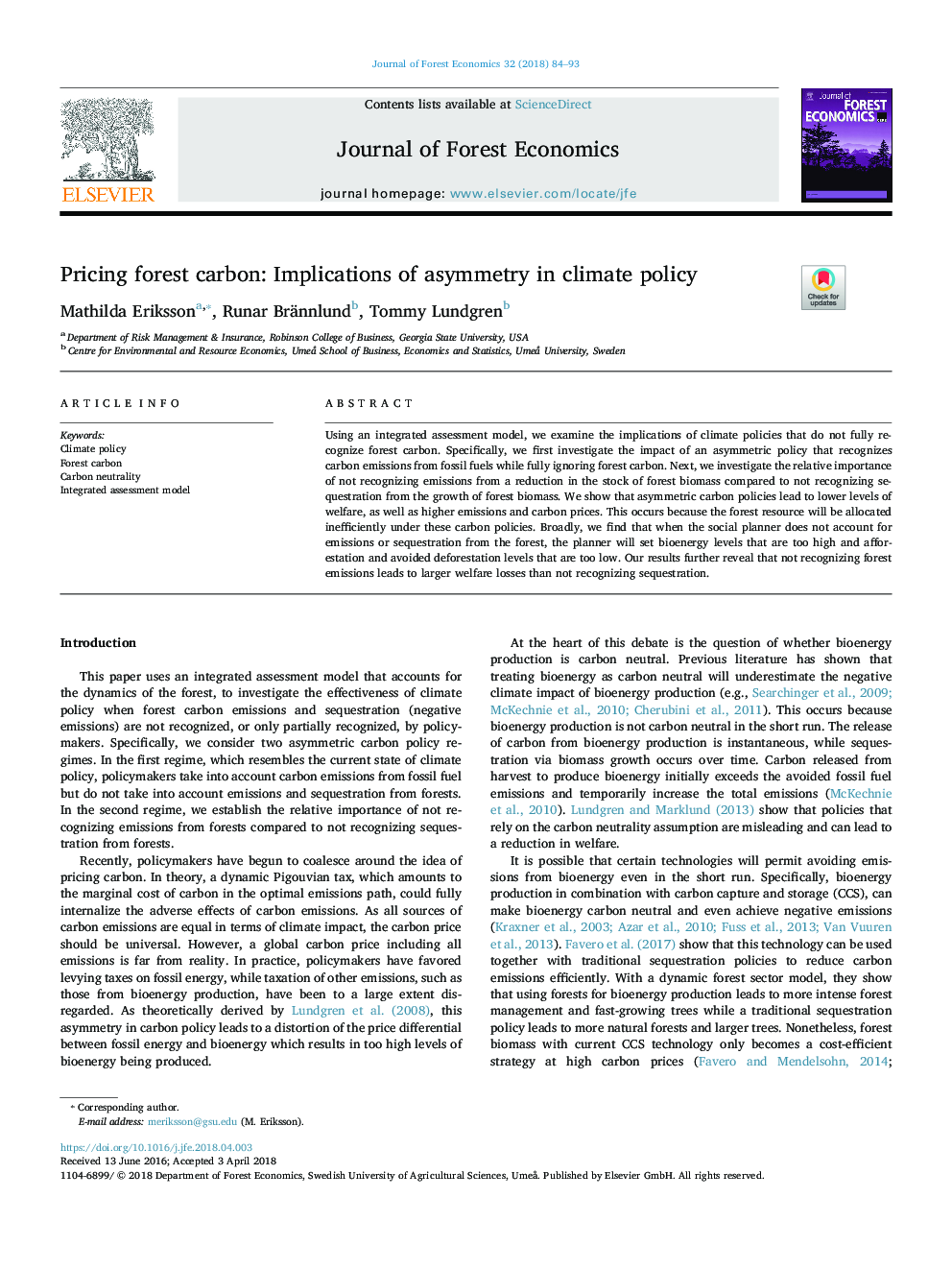| Article ID | Journal | Published Year | Pages | File Type |
|---|---|---|---|---|
| 9951706 | Journal of Forest Economics | 2018 | 10 Pages |
Abstract
Using an integrated assessment model, we examine the implications of climate policies that do not fully recognize forest carbon. Specifically, we first investigate the impact of an asymmetric policy that recognizes carbon emissions from fossil fuels while fully ignoring forest carbon. Next, we investigate the relative importance of not recognizing emissions from a reduction in the stock of forest biomass compared to not recognizing sequestration from the growth of forest biomass. We show that asymmetric carbon policies lead to lower levels of welfare, as well as higher emissions and carbon prices. This occurs because the forest resource will be allocated inefficiently under these carbon policies. Broadly, we find that when the social planner does not account for emissions or sequestration from the forest, the planner will set bioenergy levels that are too high and afforestation and avoided deforestation levels that are too low. Our results further reveal that not recognizing forest emissions leads to larger welfare losses than not recognizing sequestration.
Related Topics
Life Sciences
Agricultural and Biological Sciences
Agronomy and Crop Science
Authors
Mathilda Eriksson, Runar Brännlund, Tommy Lundgren,
